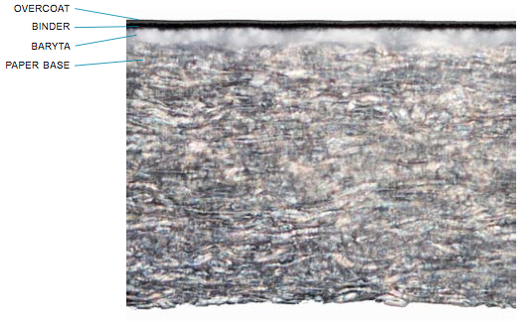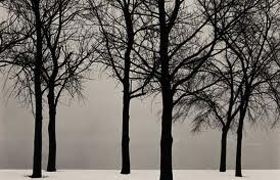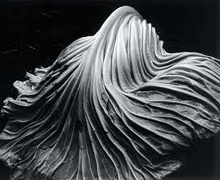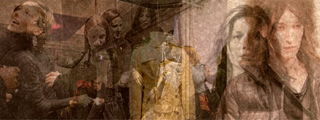Silver Gelatin
The Nature of the Fiber-Base Gelatin Silver Print
A gelatin silver print is composed of four layers: paper base, baryta, gelatin binder, and a protective gelatin layer or overcoat.

The paper base or support serves as the substrate onto which the subsequent layers are attached. Paper is in many ways an ideal support: it is lightweight, flexible, and strong enough to withstand both wet processing and regular handling. The photographic paper base must be free of photoactive impurities such as iron and lignins. In order to obtain this purity, the paper was originally made from cotton rags, though after World War I there was a transition to purified wood pulp, which has been used ever since.
The second layer is the baryta, a white coating made primarily from gelatin and barium sulfate. Dyes were often added to modify color. The purpose of the baryta layer is to cover the paper fibers and form a smooth surface upon which to coat the gelatin.
Surfaces such as smooth, fine-grained, or silk can be created using a variety of textured felts and marking rollers in the making of the paper base, by variable cal- endaring of the paper base both before and after baryta coating, and by embossing the baryta-coated paper.
Silver techniques
The image that is commonly known as a black and white photographic print is created from a film's negative. The film suspends light-sensitive silver halides in a gelatin which is rinsed away during processing. The silver that remains on the film emulsion reveals the latent image on the film's base, from which a photographic print is created. There are many different ways to create a print. Some examples are cyanotypes with their Prussian blue tint, platinum/palladium, salt, albumen and now nearly everyone is creating digital imagery.
Silver Prints



More information:
http://gawainweaver.com/images/uploads/Weaver_Guide_to_Gelatin_Silver.pdf